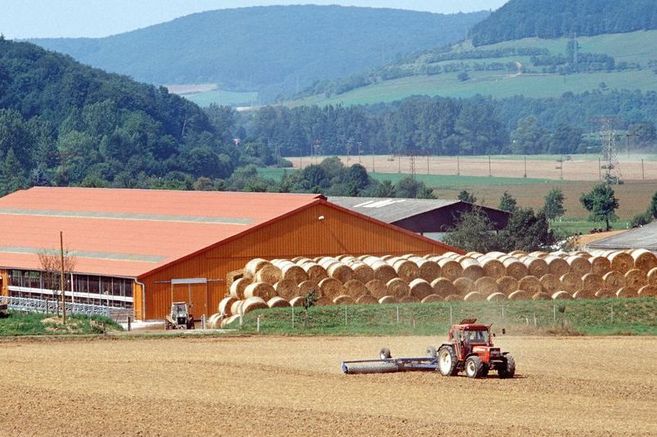Project
Greenhouse gas mitigation on dairy farms - where to start - and how expensive will it be?
![[Translate to English:]](/media/_processed_/6/f/csm_2594_Fleckvieh_TI_Martin-Koechy_IMG_6471b_original_4eedb38dd8.jpg)
Greenhouse gas mitigation on dairy farms - Approaches and Costs
Identification and evaluation of suitable GHG mitigation measures for German dairy production.
Which measures can sustainably reduce GHG emissions on dairy farms in Germany? How high is their abatement potential in different farm types and what costs are associated with their implementation? What are the barriers to implementation in practice? Answers to these questions should help to reduce greenhouse gases from milk production in a cost-efficient way.
Background and Objective
The Climate Protection Act (KSG) provides for a reduction of greenhouse gas emissions in agriculture by about 10 % by 2030 compared to 2020. Dairy production is an important lever for achieving these sectoral targets of the KSG. This is because the emissions directly attributable to dairy farming account for around 39% of the total emissions of the agricultural sector in Germany (Fuß et al. 2022). Greenhouse gas (GHG) emission reduction in dairy production is also urgent due to the high share of methane and nitrous oxide emissions, which have a strong impact on the climate, especially in the short term.
Suitable and available mitigation measures are being sought to reduce GHG emissions from dairy production. The heterogeneity of dairy farms in Germany is great. Farms differ, among other things, in the size of the farmed area, the number of animals, the breed, the output or the feeding. Accordingly, the GHG emissions and GHG emission sources of the farms are different. Differentiated mitigation concepts are needed for different farm types.
With the aim of identifying cost-effective ways to reduce GHG emissions on dairy farms, the following questions will be answered in the project:
- For which types of farms are which individual mitigation measures target-oriented?
- How high are the reduction potentials and costs for different farm types?
- Which operational characteristics have a particular influence on the GHG balance? Can a ranking of farm systems in terms of climate benefits be derived from this?
- Which implementation barriers prevent the effective establishment of farm type-specific mitigation measures? Which solutions can reduce the implementation barriers?
Approach
A literature review serves to compile an overview of (timely) available mitigation options. With the help of expert interviews, associated costs, further expected efforts and side effects (synergies and trade-offs) are recorded. Costs, mitigation potentials and side effects are assigned to each measure.
In order to do justice to the heterogeneity of German dairy farming, the calculation of individual farm costs and potentials of GHG mitigation measures is based on modelled typical farms. These typical farms represent relevant dairy farming systems in Germany. The selection and description of the typical farms is based on a statistical evaluation of the agricultural structure data.
To verify and validate the results, we use focus group and expert interviews. These qualitative methods also serve to identify relevant implementation barriers on farms, supplemented by quantitative analyses of existing data sets from the sustainability monitoring of dairy farms.
Thünen-Contact

Duration
4.2022 - 12.2025
More Information
Project status:
finished
Publications to the project
- 0
Ahrend AH, Tergast HT (2025) Kosten oder Nutzen für Milchviehbetriebe? Land & Forst 178(32):14-16
- 1
Ahrend AH, Tergast HT (2025) Milch mit weniger Emissionen - zu welchem Preis? Innovation DSV Mag(3 & 4):10-11
- 2
Ahrend AH, Tergast HT (2025) Molkereien wollen eine Klimabilanzierung : Wie verteilen sich Kosten und Nutzen Aspekte für die Milchviehbetriebe? Bauernbl Schleswig-Holstein Hamburg 79(37):52-54
- 3
Ahrend AH, Tergast HT (2025) Was kosten Klimaschutzmaßnahmen den Milchviehbetrieb? Rhein Bauernzeitg 79(5):28-30
- 4
Ahrend AH, Tergast HT (2025) Weniger Kohlendioxid : Klimaschutz in der Milchviehhaltung. Bauernzeit 66(25):42-44
- 5
Ahrend AH, Tergast HT (2024) Emissionsminderung : Was kostet das den Betrieb? DLG Mitt(12):36-39
- 6
Lassen B, Danne M, Gentz M (2023) Gut geschätzt ist halb gemessen. Allgäuer Bauernbl 91(18):23-25








